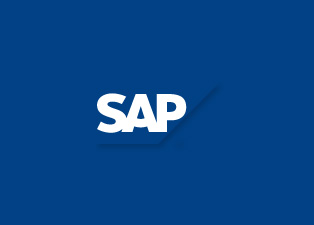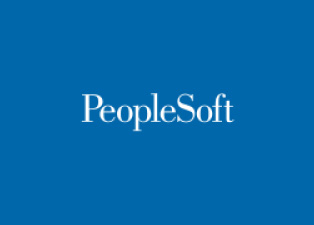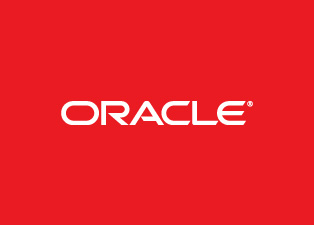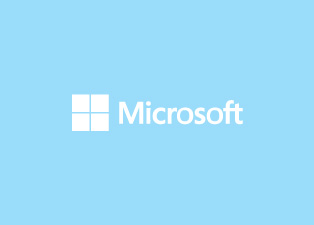Oracle DBA Online Training in USA
Oracle DBA Online Training

Oracle DBA Online Training Course Content :
OVERVIEW OF ORACLE DBA TASKS
- Oracle as a flexible, complex & robust RDBMS
- The evolution of hardware and the relation to Oracle
- Different DBA job roles(VP of DBA, developer DBA,production DBA, database babysitter)
- The changing job role of the Oracle DBA
- Environment management (network, CPU, disk and RAM)
- Instance management (managing SGA regions)
- Oracle table and index management
INSTANCE VS. DATABASE
- Components of an instance
- Creating the OFA file structure ($DBA, bdump, udump, pfile)
- Oracle Instance Internals
SGA VS. PGA
- Background processes
- Interfaces with server and disk I/O subsystem
- Using SQL*Plus for DBA management
CONNECTING AND EXECUTING SQL
- Using the “as sysdba” syntax
- Overview of SQL*Plus DBA commands (startup, etc.)
- Control file, UNDO and REDO management
- Explaining the use of control files
- Listing the Contents of the control File
- File locations for control Files
- Obtaining Control File Information
- Listing control file contents
- Displaying and Creating Undo segments
- Altering Undo Segments
- Determining the Number and Size of Undo segments
- Understanding flashback technology
- Troubleshooting Undo – snapshot too old
- Redo log concepts for recovery
- Online redo log (log_buffer) online redo logs and archived redo logs
- Oracle ARCH and LGWR background processes
- Redo log dictionary queries
User Management and Role Management
Proprietary and Confidential
- Redo log switch frequency and performance
- Multiplexing the Online Redo Log Files
- Archiving the Oracle Redo Logs
- Recovery using the redo log files
- User and privilege management
- Creating New Database Users
- Using pre-spawned Oracle connections
- Auditing User activity
- Identifying System and Object Privileges
- Granting and Revoking Privileges
- Creating and Modifying Roles
- Displaying user security Information from the Data Dictionary
- Oracle database management
OVERVIEW OF INSTANCE MANAGEMENT
- Parameter files (init.ora, listener.ora, tnsnames.ora)
- Rules for sizing SGA components
- Automated Oracle memory management (AMM)
- Initialization file management
CREATING THE INIT.ORA FILE
- Using spfile
- Displaying init.ora values with vparameter
- Oracle*Net configuration
- Creating the listener.ora file
- Creating the tnsnames.ora file
- Data buffer configuration & sizing
- Inside the Oracle data buffers
- Using the KEEP pool
- Monitoring buffer effectiveness
- Using multiple blocksizes (multiple buffer pools)
- Shared pool and PGA configuration & Sizing
- Shared pool concepts and components
- Understanding the library cache
- Relieving shared pool contention
- Overview of PGA for sorting and hash joins
- Using sort_area_size, hash_area_size and pga_aggregate_target
- Troubleshooting network connectivity
- Verifying network connectivity with ping and tnsping
- Testing database links
- Oracle object management
ORACLE TABLES, VIEWS AND MATERIALIZED VIEWS
- Types of Oracle tables (regular, IOT, sorted hash clusters, nested tables)
- Oracle Views
- Oracle materialized views
- Oracle indexes
- Types of Oracle indexes (b-tree, bitmap, bitmap join index)
- Creating B*-Tree, bitmap and function-based Indexes
- Function-based indexes
- Finding indexing opportunities
- Index maintenance
- Oracle constraints
COSTS & BENEFITS OF CONSTRAINTS
- Types of Oracle indexes constraints (check, not null, unique, PK, FK)
- Cascading constraints
- Schema, File & tablespace management
- Describing the relationship between data files, tablespaces and table
- Understanding Oracle segments
- Creating Tablespaces – using the autoextend option
- Changing the Size of Tablespaces – alter database datafile command
- Defining a TEMP tablespace
- Changing the default storage Settings for a tablespace
- Review of the storage parameters in DBA views (ASM, ASSM, pctfree, pctused and freelists)
- Monitoring Chained rows (fetch continued rows)
- Monitoring Insert and Update performance (pctused, APPEND)
- Database Maintenance
- Reason for reorgs – chained rows, imbalanced freelists
- Reorganizing Tables using Export and Import
- Using CTAS to reorganize data
- Index rebuilding
- Backup & Recovery overview (hot & cold Backups, RMAN, block change tracking)
ORACLE DBA UTILITIES
- Data pump (Imp and exp utilities)
- SQL*Loader
- LogMiner ,Flashback Introduction DataGuard
- Creating and Modifying Roles
- Oracle DBA utilities – Oracle dbms packages (dbms_redefinition)
- Introduction Replication (Streams, multimaster, materialized views)
- Monitoring Oracle
- This section explores the methods used for monitoring all active components of the Oracle database.
DICTIONARY AND V$ VIEWS
- The dba_, all_ and user_ structures
- Querying the tables, indexes, and segments views
- Querying the AWR (STATSPACK) tables
- Table & index monitoring
- Monitoring table extents and fragmentation
- Using the dba_tables and dba_segments views
- Monitoring table CBO statistics
- Monitoring table extents and fragmentation
- Locating chained rows
- Monitoring table & index growth
- Monitoring index usage
- Monitoring index fragmentation
- Locating un-used indexes
- Identifying IOT candidates
- Reorganizing Indexes with alter index rebuild
- Dropping Indexes
- Getting Index Information from the Data Dictionary
MONITORING WITH THE AWR AND STATSPACK
- Creating a time-series performance report
- Using www.statspackanalyzer.com
- Scripts for AWR and STATSPACK
- Plotting performance data (WISE, Excel)
- Finding performance trends and signatures
- Oracle environment monitoring
- Displaying and managing Oracle sessions (v$session, v$process)
- Using AWR to monitor disk, network and CPU consumption
- Monitoring the alert log
- Oracle trace/dump files
- STATSPACK and AWR performance management
INSTALLING STATSPACK
- Running STATSPACK reports
- Interpreting a STATSPACK report
- Getting time series reports with STATSPACK
- Finding performance signatures with STATSPACK
- Performance Management
- This section explores the methods used for performance management in Oracle and shows tips and scripts for monitoring all components of any Oracle database. You will also learn the proper action to take when any area of Oracle becomes a bottleneck.
BOTTLENECK PERFORMANCE ANALYSIS
- Drill-down into AWR reports
- Top-5 timed events
- External Server Bottlenecks (Network, I/O, RAM, CPU)
- Network troubleshooting
- Instance Tuning
- Changing init.ora optimizer parameters (index_optimizer_cost_adj, optimizer_mode)
- Managing region parameters (shared_pool_size, db_cache_size)
- Understanding instance contention (e.g. Buffer busy waits, library cache contention)
- SQL and CBO behavior
INTRODUCTION TO COST-BASED OPTIMIZATION
- Changing the default optimizer modes
- Optimizer parameters
- Dynamic sampling
- Collecting table and index statistics (dbms_stats)
- Using column histograms and skewonly
- Tracing SQL Execution
USING EXPLAIN PLAN
- Using “set autotrace”
- Interpreting EXPLAIN PLAN Output
- Using TKPROF / SQL*Trace
- SQL Execution Internals
REVIEW OF BASIC JOINING METHODS
- Merge join
- Hash Join
- Nested Loop join
- Advanced SQL operators
- Between operator
- SQL Tuning
USING HINTS TO IMPROVE SQL PERFORMANCE
- Using parallel query to improve performance
- SQL re-usability within the library cache
- Table high-water mark
- Table striping and table partitions
- Using indexes to improve performance
- Identifying full-table scans
- Re-writing SQL queries
- Tuning sub-queries
- Oracle High Availability tools
CONTINUOUS AVAILABILITY AND DISASTER RECOVERY
- Quantifying the cost of unplanned downtime
- Oracle multi-master replication
- Introduction to Data-guard
- Introduction to Oracle Streams
- Introduction to Real Application Clusters
- Backup & Recovery
OS-LEVEL BACKUPS
- Hardware-level backup & recovery
- Block-level change tracking
- Disk mirroring
- Backup & recovery and RAID level
- Oracle-level backups (exp, expdp & RMAN)
- Hot vs. Cold backups
Drop your query
Most Popular Courses
Achieve your career goal with industry recognised learning paths
What my Client's Say?
-
It was a great course over my expectations. I am eager to have another course wıth you as soon as possıble ~ R. Kamand
-
All in all, it was a very constructive and one in a lifetime experience. I'm so glad that I was part of it.~ T. Engin
-
It was the best decision I had ever made in my life. Although it was expensive for me, but I don't regret even for one second. ~ Maruti Malla
-
Thank you for this great course. I learned a lot of things, I met very nice people and I am happy that I had these 6 crazy weeks with you.".~ Najmul Shar A Baig
-
Very nice and friendly tutor and staff. The course was very fruitful, particularly the input sessions during the first half of it.~ Radha Nandyala
-
It was such great experience, though it was really intensive, it was worth doing it! Cant thank enough all team effort esp Mohan! .~ Rohan Kumar
-
The course was really good because it was a practical course.~ M.Radha patel
-
I liked this experience. Good tutor and nice mates. I will always remember it. ~ Jitu Bavaria











